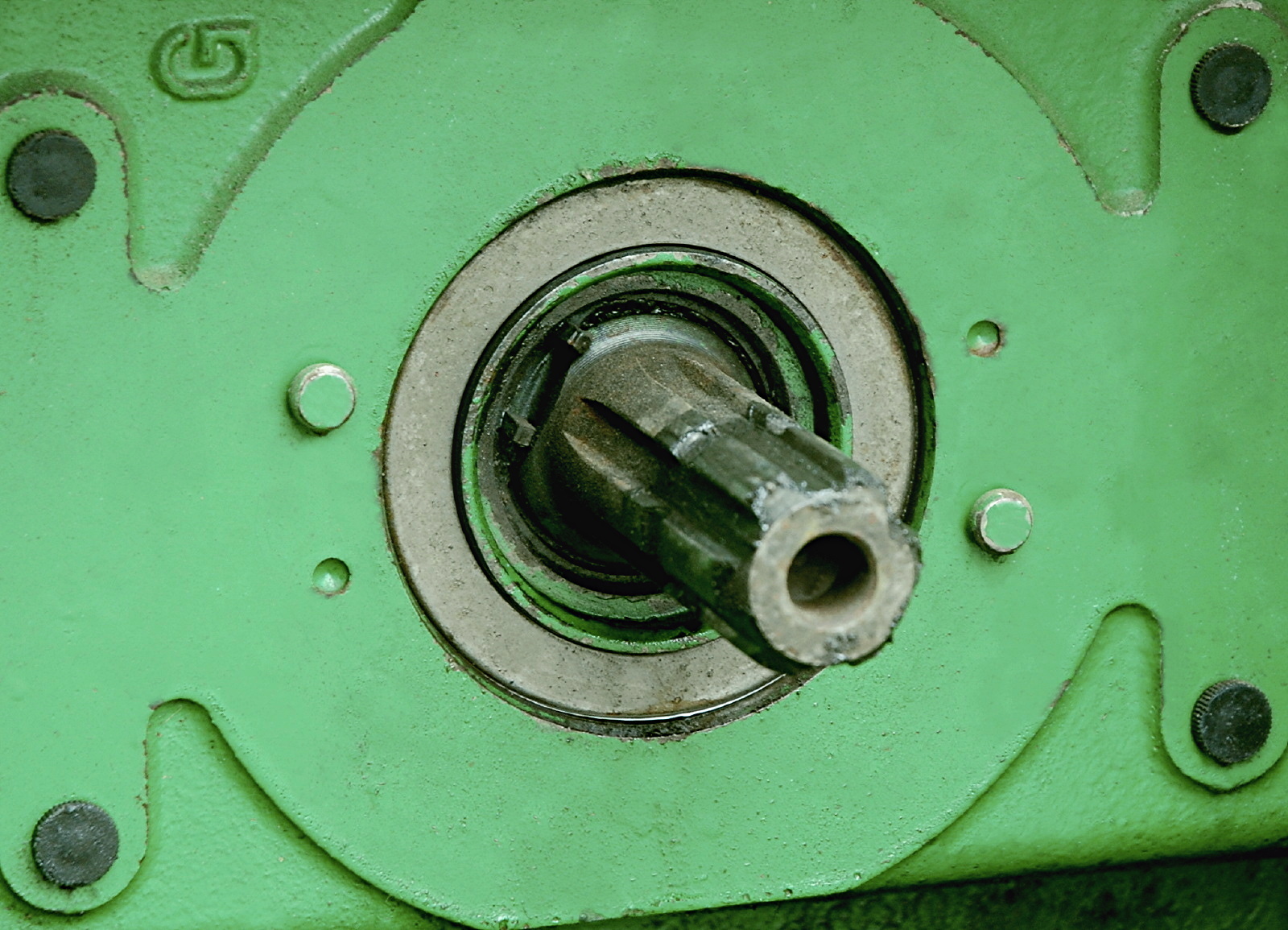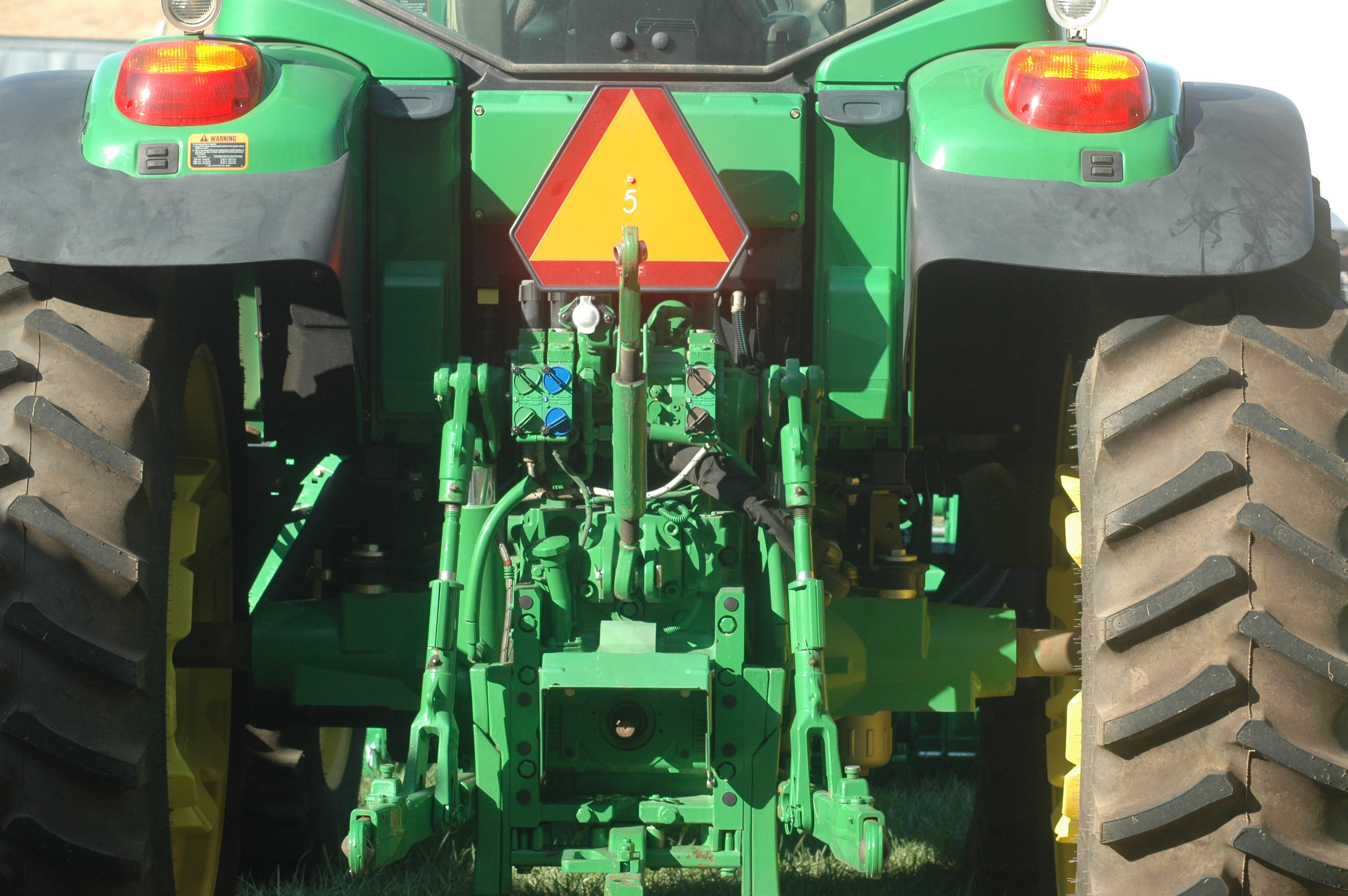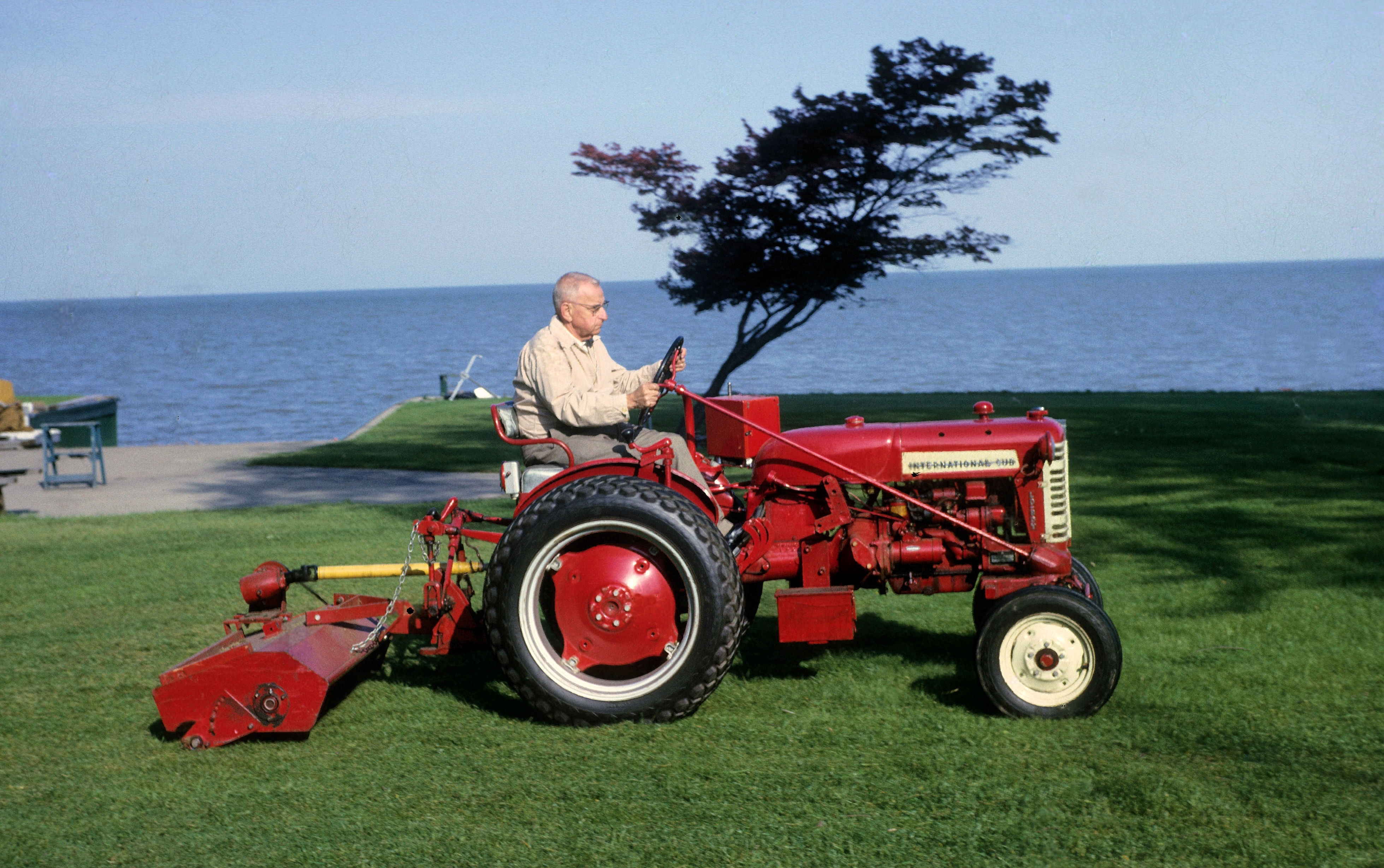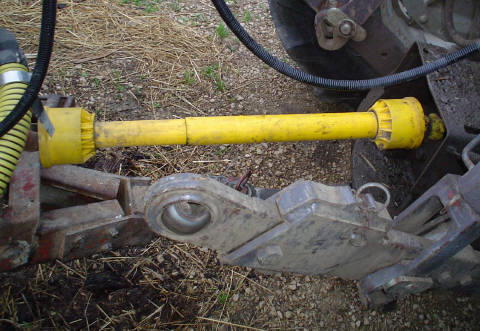Power take off on:
[Wikipedia]
[Google]
[Amazon]

 A power take-off or power takeoff (PTO) is one of several methods for taking power from a power source, such as a running
A power take-off or power takeoff (PTO) is one of several methods for taking power from a power source, such as a running
nasa.gov
/ref> See also
 Various power transmission methods were available before power take-offs became common, but there were applications which would benefit more from some of the attributes that PTOs would provide. Flat belts were generally only useful for applications where the engine was stationary, such as factory
Various power transmission methods were available before power take-offs became common, but there were applications which would benefit more from some of the attributes that PTOs would provide. Flat belts were generally only useful for applications where the engine was stationary, such as factory
 The PTO and its associated shafts and
The PTO and its associated shafts and



 A power take-off or power takeoff (PTO) is one of several methods for taking power from a power source, such as a running
A power take-off or power takeoff (PTO) is one of several methods for taking power from a power source, such as a running engine
An engine or motor is a machine designed to convert one or more forms of energy into mechanical energy.
Available energy sources include potential energy (e.g. energy of the Earth's gravitational field as exploited in hydroelectric power gen ...
, and transmitting
In electronics and telecommunications, a radio transmitter or just transmitter is an electronic device which produces radio waves with an antenna. The transmitter itself generates a radio frequency alternating current, which is applied to the ...
it to an application such as an attached implement or separate machine.
Most commonly, it is a splined drive shaft
A drive shaft, driveshaft, driving shaft, tailshaft (Australian English), propeller shaft (prop shaft), or Cardan shaft (after Girolamo Cardano) is a component for transmitting mechanical power (physics), power and torque and rotation, usually ...
installed on a tractor
A tractor is an engineering vehicle specifically designed to deliver a high tractive effort (or torque) at slow speeds, for the purposes of hauling a trailer or machinery such as that used in agriculture, mining or construction. Most common ...
or truck
A truck or lorry is a motor vehicle designed to transport cargo, carry specialized payloads, or perform other utilitarian work. Trucks vary greatly in size, power, and configuration, but the vast majority feature body-on-frame construction ...
allowing implements with mating fittings to be powered directly by the engine.
Semi-permanently mounted power take-offs can also be found on industrial and marine engines. These applications typically use a drive shaft and bolted joint
A bolted joint is one of the most common elements in construction and machine design. It consists of a male threaded fastener (e. g., a bolt) that captures and joins other parts, secured with a matching female screw thread. There are two main t ...
to transmit power to a secondary implement or accessory. In the case of a marine application, such shafts may be used to power fire pumps.
In aircraft
An aircraft is a vehicle that is able to fly by gaining support from the air. It counters the force of gravity by using either static lift or by using the dynamic lift of an airfoil, or in a few cases the downward thrust from jet engines ...
applications, such an accessory drive
The accessory drive is a gearbox that forms part of a gas turbine engine. Although not part of the engine's core, it drives the accessories, fuel pumps, etc., that are otherwise essential for the operation of the engine or the aircraft on which i ...
may be used in conjunction with a constant speed drive
A constant speed drive (CSD) also known as a constant speed generator, is a type of transmission that takes an input shaft rotating at a wide range of speeds, delivering this power to an output shaft that rotates at a constant speed, despite the ...
. Jet aircraft have four types of PTO units: internal gearbox, external gearbox, radial drive shaft, and bleed air, which are used to power engine accessories. In some cases, aircraft power take-off systems also provide for putting power ''into'' the engine during engine start.NASA Technical Memorandum 101731; Monitoring Techniques for "X-29A Aircraft's High Speed Rotating Power Takeoff Shaft"; David F Voracek, Ames Research Center, Dryden Flight Research Facility, Edwards, California, December 199nasa.gov
/ref> See also
Coffman starter
The Coffman engine starter (also known as a "shotgun starter") was a starting system used on many piston engines in aircraft and armored vehicles of the 1930s and 1940s. It used a cordite cartridge to move a piston, which cranked the engine. The C ...
.
Also, in wave energy technology to harness the ocean wave energy, the power take-off systems are used. The working principle can vary and be classified as a direct mechanical drive system, hydro turbine transfer system, hydro motor system, pneumatic air turbine transfer system, and direct electrical drive system.
History
 Various power transmission methods were available before power take-offs became common, but there were applications which would benefit more from some of the attributes that PTOs would provide. Flat belts were generally only useful for applications where the engine was stationary, such as factory
Various power transmission methods were available before power take-offs became common, but there were applications which would benefit more from some of the attributes that PTOs would provide. Flat belts were generally only useful for applications where the engine was stationary, such as factory steam engine
A steam engine is a heat engine that performs mechanical work using steam as its working fluid. The steam engine uses the force produced by steam pressure to push a piston back and forth inside a cylinder. This pushing force can be trans ...
s, portable stationary engines, or traction engine
A traction engine is a steam engine, steam-powered tractor used to move heavy loads on roads, plough ground or to provide power at a chosen location. The name derives from the Latin ''tractus'', meaning 'drawn', since the prime function of any t ...
s parked in front of the work. For moving vehicles such as a traction engine
A traction engine is a steam engine, steam-powered tractor used to move heavy loads on roads, plough ground or to provide power at a chosen location. The name derives from the Latin ''tractus'', meaning 'drawn', since the prime function of any t ...
or early tractor
A tractor is an engineering vehicle specifically designed to deliver a high tractive effort (or torque) at slow speeds, for the purposes of hauling a trailer or machinery such as that used in agriculture, mining or construction. Most common ...
towing a farm implement
Agricultural equipment is any kind of machinery used on a farm to help with farming. The best-known example of this kind is the tractor.
Tractor and power
*Tractor / Two-wheel tractor
* Tracked tractor / Caterpillar tractor
Soil cultiv ...
, the implement could receive rotary power by taking it from one of its own wheels (whose turning was imparted by the towing) and distributing it via roller chains (to a sickle bar's crank, for example), but such a transmission ceases if the vehicle stops traveling, and the workload's resistance tends to make the wheel skid rather than turn, even if cleated. The concept of a shaft drive with easily connected and disconnected couplings, and flexibility for driving at changing angles (such as when an articulated tractor-and-trailer combination turns), was a goal to pursue.
Experimental power take-offs were tried as early as 1878, and various homemade versions were constructed over the subsequent decades.
International Harvester
The International Harvester Company (often abbreviated by IHC, IH, or simply International ( colloq.)) was an American manufacturer of agricultural and construction equipment, automobiles, commercial trucks, lawn and garden products, household e ...
Company (IHC) was first to market with a PTO on a production tractor, with its model 8-16, introduced in 1918.. Edward A. Johnston, an IHC engineer, had been impressed by a homemade PTO that he saw in France about a decade before, improvised by a French farmer and mechanic surnamed Gougis. He and his IHC colleagues incorporated the idea into the 8-16, and designed a family of implements to take advantage of the feature. IHC was not alone in the market for long, as within a year PTOs were appearing on other production tractors, such as some Case models. In 1920, IHC offered the PTO option on their 15-30 tractor, and it was the first PTO-equipped tractor to be submitted for a Nebraska tractor test. The PTO was a competitive advantage for IHC in the 1920s, and other companies eventually caught up with PTO implementation.
Inside the transmission
Transmission may refer to:
Medicine, science and technology
* Power transmission
** Electric power transmission
** Propulsion transmission, technology allowing controlled application of power
*** Automatic transmission
*** Manual transmission
*** ...
, the exact point along the gear train
A gear train is a mechanical system formed by mounting gears on a frame so the teeth of the gears engage.
Gear teeth are designed to ensure the pitch circles of engaging gears roll on each other without slipping, providing a smooth transmission ...
where the power is taken off determines whether the PTO can be run independently of vehicle travel (ground speed
Ground speed is the horizontal speed of an aircraft relative to the Earth’s surface. It is vital for accurate navigation that the pilot has an estimate of the ground speed that will be achieved during each leg of a flight.
An aircraft diving ve ...
). Early PTOs were often taken off the main output shaft, meaning that the vehicle had to be "in gear" in order to run the PTO. Later this was improved by so-called live PTO (LPTO) designs, which allow control of the PTO rotation independently of the tractor motion. This is an advantage when the load driven by the PTO requires the tractor motion to slow or stop running to allow the PTO driven equipment to catch up. It also allows operations where the tractor remains parked, such as silo-filling or unloading a manure spreader
A manure spreader or muck spreader or honey wagon is an agricultural machine used to distribute manure over a field as a fertilizer. A typical (modern) manure spreader consists of a trailer towed behind a tractor with a rotating mechanism driven b ...
to a pile or lagoon rather than across a field. In 1945, Cockshutt Farm Equipment Ltd of Brantford
Brantford (Canada 2021 Census, 2021 population: 104,688) is a city in Ontario, Canada, founded on the Grand River (Ontario), Grand River in Southwestern Ontario. It is surrounded by County of Brant, Brant County, but is politically separate with ...
, Ontario, Canada, introduced the Cockshutt Model 30 tractor with LPTO. Most PTOs built today are live. In modern tractors, LPTO is often controlled by push-button or selector switch. This increases safety of operators who need to get close to the PTO shaft.
Safety
 The PTO and its associated shafts and
The PTO and its associated shafts and universal joint
A universal joint (also called a universal coupling or U-joint) is a joint or coupling connecting rigid shafts whose axes are inclined to each other. It is commonly used in shafts that transmit rotary motion. It consists of a pair of hinges lo ...
s are a common cause of incidents and injury in farming and industry. According to the National Safety Council
The National Safety Council (NSC) is a 501(c)(3) nonprofit, public service organization promoting health and safety in the United States. Headquartered in Itasca, Illinois, NSC is a member organization, founded in 1913 and granted a congressi ...
, six percent of tractor related fatalities in 1997 in the United States involved the PTO. Incidents can occur when loose clothing is pulled into the shaft, often resulting in bone fracture
A bone fracture (abbreviated FRX or Fx, Fx, or #) is a medical condition in which there is a partial or complete break in the continuity of any bone in the body. In more severe cases, the bone may be broken into several fragments, known as a '' ...
s, loss of limb, or death to its wearer. On April 13, 2009 former Major League Baseball star Mark Fidrych
Mark Steven Fidrych ( ; August 14, 1954 – April 13, 2009), nicknamed "The Bird", was an American Major League Baseball (MLB) baseball pitcher. He pitched his entire career for the Detroit Tigers (1976–1980).
Known for his quirky antics ...
died as a result of a PTO related accident; "He appeared to have been working on the truck when his clothes became tangled in the truck's power take-off shaft", District Attorney Joseph Early Jr. said in a statement. Despite much work to reduce the frequency and severity of agricultural injuries, these events still occur. Power take-off entanglements are one example of agricultural events that can lead to death or permanent disability.
Some implements employ light free-spinning protective plastic guards to enshroud the PTO shaft;
these are mandatory in some countries.
In the UK, Health and Safety Executive
The Health and Safety Executive (HSE) is a UK government agency responsible for the encouragement, regulation and enforcement of workplace health, safety and welfare, and for research into occupational risks in Great Britain. It is a non-depar ...
guidance is contained in a leaflet.
Technical standardization
Agricultural PTOs arestandardized
Standardization or standardisation is the process of implementing and developing technical standards based on the consensus of different parties that include firms, users, interest groups, standards organizations and governments. Standardization ...
in dimensions and speed. The ISO
ISO is the most common abbreviation for the International Organization for Standardization.
ISO or Iso may also refer to: Business and finance
* Iso (supermarket), a chain of Danish supermarkets incorporated into the SuperBest chain in 2007
* Iso ...
standard for PTOs is ''ISO 500'', which as of the 2004 edition was split into three parts:
#''ISO 500-1'' General specifications, safety requirements, dimensions for master shield and clearance zone
#''ISO 500-2'' Narrow-track tractors, dimensions for master shield and clearance zone
#''ISO 500-3'' Main PTO dimensions and spline dimensions, location of PTO.
The original type (designated as Type 1) calls for operation at 540 revolutions per minute
Revolutions per minute (abbreviated rpm, RPM, rev/min, r/min, or with the notation min−1) is a unit of rotational speed or rotational frequency for rotating machines.
Standards
ISO 80000-3:2019 defines a unit of rotation as the dimensionl ...
(rpm). A shaft that rotates at 540 rpm has six splines on it, and a diameter of .
Two newer types, supporting higher power applications, operate at 1000 rpm and differ in shaft size. The larger shaft has 20 splines (diameter ) (designated as Type 3), while the smaller has 21 splines (diameter ) (designated as Type 2). Farmers typically differentiate these two types by calling them "large 1000" or "small 1000" as compared to the Type 1 which is commonly referred to as the "540".
Due to ever-increasing horsepower requirements from farm implements, and higher horsepower engines being installed in farm tractors, a still larger type (designated as Type 4) has been added to ISO 500. It operates at a higher rotational speed of 1300 rpm in order to allow for power transfer at reduced levels of torque. The shaft has 22 splines with a major diameter of 57.5 millimeters
330px, Different lengths as in respect to the electromagnetic spectrum, measured by the metre and its derived scales. The microwave is between 1 meter to 1 millimeter.
The millimetre (American and British English spelling differences#-re, -er, ...
(mm). It is meant to handle PTO powers up to 450 kilowatts
The watt (symbol: W) is the unit of power or radiant flux in the International System of Units (SI), equal to 1 joule per second or 1 kg⋅m2⋅s−3. It is used to quantify the rate of energy transfer. The watt is named after James Wa ...
(kW), or roughly 600 horsepower
Horsepower (hp) is a unit of measurement of power, or the rate at which work is done, usually in reference to the output of engines or motors. There are many different standards and types of horsepower. Two common definitions used today are the ...
(hp).
All four types rotate counterclockwise when viewed from inside the tractor's cab; when standing behind the tractor, the shaft turns clockwise.
A 10-spline type was used with some early equipment such as the 1948 Land Rover
Land Rover is a British brand of predominantly four-wheel drive, off-road capable vehicles, owned by multinational car manufacturer Jaguar Land Rover (JLR), since 2008 a subsidiary of India's Tata Motors. JLR currently builds Land Rovers ...
. A six-spline adapter was usually supplied. It is customary for agricultural machines manufacturers to provide the nominal PTO power specification, an indication of the available instantaneous power at the shaft. Newer tractors may come equipped with 540/540E and/or 1000/1000E options that allow the tractor to power certain low-power-demand implements like hay rake
A hay rake is an agricultural rake used to collect cut hay or straw into windrows for later collection (e.g. by a baler or a loader wagon). It is also designed to fluff up the hay and turn it over so that it may dry. It is also used in the even ...
s or tedder Tedder is a surname. Notable people with the surname include:
*Arthur Tedder, 1st Baron Tedder, British air marshal
* Constant Tedder, former Chief Executive Officer of Jagex Games Studio
* Ernest Tedder (1915–1972), English cricketer
*Henry Ric ...
s using lower engine speeds to maintain the revolutions per minute needed, using less fuel and placing less stress on the engine – thereby improving efficiency and reducing costs.
The first industry standard Standard may refer to:
Symbols
* Colours, standards and guidons, kinds of military signs
* Standard (emblem), a type of a large symbol or emblem used for identification
Norms, conventions or requirements
* Standard (metrology), an object th ...
for PTO design was adopted by ASAE (the American Society of Agricultural Engineers
The American Society of Agricultural and Biological Engineers (ASABE) is an international professional society devoted to agricultural and biological engineering. It was founded in December 1907 at the University of Wisconsin–Madison as the A ...
) in April 1927. The PTO rotational speed was specified as 536 ± 10 rpm; the direction was clockwise. The speed was later changed to 540 rpm.
Use on commercial vehicles

Truck transmissions
A truck or lorry is a motor vehicle designed to transport cargo, carry specialized payloads, or perform other utilitarian work. Trucks vary greatly in size, power, and configuration, but the vast majority feature body-on-frame constructi ...
have one or more locations which allow for a PTO to be mounted. The PTO must be purchased separately and care is required to match the physical interface of the transmission with a compatible PTO. PTO suppliers will usually require details of the make, model and even serial number of the transmission. Care is also needed to ensure that the physical space around the transmission allows for installation of the PTO. The PTO is engaged and disengaged using the main transmission clutch and a remote control mechanism which operates on the PTO itself. Typically, an air valve is used to engage the PTO, but a mechanical linkage, electric or hydraulic mechanism are also options.
Most Unimog
The Unimog (, ) is a range of multi-purpose tractors, trucks and lorries that has been produced by Boehringer from 1948 until 1951, and by Daimler Truck (formerly Daimler-Benz, DaimlerChrysler and Daimler AG) since 1951. In the United States and ...
s come with front and/or rear PTOs and hydraulics as well as three point hitch systems.
Units will be rated according to the continuous and intermittent torque that can be applied through them and different models will offer different "PTO shaft rotation to engine RPM" ratios.
In the majority of cases, the PTO will connect directly to a hydraulic pump
Hydraulic pumps are used in hydraulic drive systems and can be hydrostatic or hydrodynamic. A hydraulic pump is a mechanical source of power that converts mechanical power into hydraulic energy ( hydrostatic energy i.e. flow, pressure). It generat ...
. This allows for transmission of mechanical force through the hydraulic fluid
A hydraulic fluid or hydraulic liquid is the medium by which power is transferred in hydraulic machinery. Common hydraulic fluids are based on mineral oil or water. Examples of equipment that might use hydraulic fluids are excavators and backhoe ...
system to any location around the vehicle where a hydraulic motor will convert it back into rotary or linear mechanical force. Typical applications include:
* Running a water pump on a fire engine or water truck
* Running a truck mounted hot water extraction machine for carpet cleaning (driving vacuum blower and high-pressure solution pumps)
* Powering a blower system used to move dry materials such as cement
*Powering a vehicle-integrated air compressor system
* Raising a dump truck bed
* Operating the mechanical arm on a bucket truck used by electrical maintenance personnel or cable TV maintenance crews
* Operating a winch on a tow truck
* Operating the compactor on a garbage truck
* Operating a Boom/Grapple truck
* Operating a truck mounted tree spade
A tree spade is a specialized machine that mechanizes the transplanting of large plants whose hand-powered transplanting (using traditional spades, wagons, and other equipment) would be prohibitively laborious. These include large bushes and ...
and lift-mast assembly
Split shaft
A split shaft PTO is mounted to the truck's drive shaft to provide power to the PTO. Such a unit is an additional gearbox that separates the vehicle's drive shaft into two parts: * The gearbox-facing shaft which will transmit the power of the engine to the split shaft PTO; * The axle-facing shaft which transmit the propelling power to the axle. The unit itself is designed to independently divert the engine's power to either the axle-facing shaft or the additional PTO output shaft. This is done by two independent clutches like tooth or dog clutches, which can be operated at totaldriveline
A drivetrain (also frequently spelled as drive train or sometimes drive-train) is the group of components that deliver mechanical power from the prime mover to the driven components. In automotive engineering, the drivetrain is the components o ...
standstill only. Because the main gearbox changes the rotation speed by selection of a gear, the PTO cannot be operated while the vehicle is moving.
On 4x4 vehicles, only the rear drive shaft is used by the split shaft PTO gearbox, requiring the vehicle's 4x4 drive scheme to be of the ''selectable 4WD'' type to keep the front axle drive shaft completely decoupled during PTO operation.
It is also possible to connect something other than a hydraulic pump directly to the PTO: for example, fire truck pumps.
"Sandwich" split shaft
A "sandwich" type split shaft unit is mounted between engine and transmission and used on road maintenance vehicles, fire fighting vehicles and off-road vehicles. This unit gets the drive directly from the engine shaft and can be capable of delivering up to the complete engine power to the PTO. Usually these units come with their own lubricating system. Due to the sandwich mounting style, the gearbox will be moved away from the engine, requiring the driveline to accommodate the installation.See also
*Balancing machine
A balancing machine is a measuring tool used for balancing rotating machine parts such as rotors for electric motors, fans, turbines, disc brakes, disc drives, propellers and pumps. The machine usually consists of two rigid pedestals, with suspe ...
References
Bibliography
* {{DEFAULTSORT:Power Take-Off ISO standards Agricultural machinery